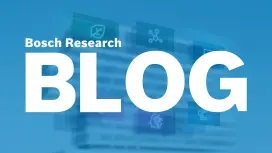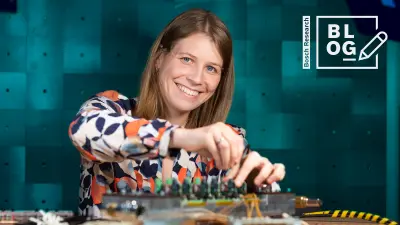Hybrid Additive Manufacturing — An Innovative Manufacturing Process for Power Electronics
Bosch Research Blog | Posted by Isabelle Günther, 2024-08-06

Meet Bosch Research PhD candidate Isabelle Günther, who is exploring a cutting-edge, hybrid approach to additive manufacturing. Isabelle utilizes the Laser Powder Bed Fusion (LPBF) process to build functional structures directly on a ceramic-based substrate.
Isabelle, as you conduct research in the field of Laser Powder Bed Fusion (LPBF), what significance does this process hold in the context of manufacturing, particularly in the field of electromobility?
The increasing use of electrification and digitalization, especially in the field of electromobility, has resulted in growing demand for power electronics. Power electronics play a crucial role in the efficient conversion of energy using semiconductor components. This surge in demand has also led to higher functional and quality requirements. As a result, the structure of power electronics has become increasingly complex.
To address this complexity, power electronics with a hybrid structure are now being widely utilized. This hybrid structure involves the assembly of small, functional structures onto a base body, referred to as a substrate. Copper, known for its high thermal and electrical conductivity, is the preferred material for manufacturing these functional structures. The substrates themselves are power substrates made of ceramic material with copper metallization on both sides.
Due to their small size, the conventional manufacturing of the functional structures and their handling using pick-and-place processes are expensive and complex. In addition, the connection of the functional structures to the substrate requires additional manufacturing and joining processes, such as sintering. Also, the joining material creates thermal resistance between the functional structures and the substrate.

The Laser Powder Bed Fusion (LPBF) process is used to build functional structures directly on a ceramic-based substrate. This eliminates the need for separate pick-and-place and joining processes, as the manufacturing and connection of the structures occur simultaneously. By directly connecting the functional structures to the substrate, thermal resistance is eliminated, resulting in improved power electronics performance.
Additionally, the LPBF process allows for a high degree of flexibility when designing complex geometries that would not be achievable through traditional manufacturing methods. In the LPBF process, the functional structures are built by selectively melting a copper powder using a high-energy, highly focused laser. During cooling, the molten copper solidifies and forms a solid layer. In this way, layer by layer the entire functional structures are built up on top of the ceramic-based substrate. Conventionally, in the LPBF process, large structural components are built on massive base plates. Hybrid additive manufacturing therefore also represents an innovative approach within additive manufacturing processes.
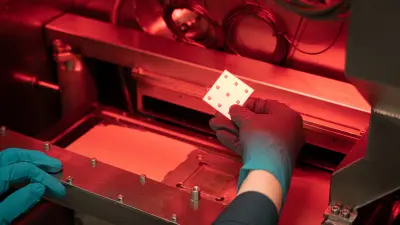
What challenges arise when using the LPBF process for laser-based processing of copper?
Laser-based processing of copper in the LPBF process poses a major challenge. Copper has a high reflectivity and a low absorption capacity for laser radiation. Therefore, only a small amount of the applied energy is available for melting the powder material. The high thermal conductivity of copper is advantageous for use in power electronics. However, in the LPBF process, the high conductivity leads to rapid dissipation of the applied energy into the surrounding powder and the ceramic-based substrate. These factors can lead to unstable process conditions and make it challenging to develop a suitable process for achieving high-quality additively manufactured functional structures made of copper.
In addition, when the power substrate is used in the LPBF process, the hybrid structure creates a multi-material system consisting of the ceramic-based substrate, the substrate metallization and the additively manufactured functional structures. Various materials with very different properties are combined, resulting in complex interactions between the materials.

Due to this localized application of energy and the high energy input required for processing copper, the LPBF process creates high temperature gradients between the molten copper, the surrounding copper powder, and the substrate. The power substrates are ceramic-based, making them sensitive to residual stresses and cracks introduced by the high temperature gradients.
This means your research is focusing on the processability of copper in the hybrid LPBF process?
Yes, I am currently engaged in experimental research to explore the processability of copper in the hybrid LPBF process as part of my thesis. In order to advance the process development, I am integrating experimental analyses with the development of a thermomechanical process simulation. This comprehensive approach allows for a systematic understanding of the interactions between the additively manufactured functional structures and the ceramic-based substrate. I am investigating various factors that impact process stability and the properties of the resulting components, including different laser beam sources and shapes, adjustable process parameters, and modifications to the copper material.
How can the results of your research contribute to the development of solutions that are "Invented for life?"
For example, my PhD research on the processability of copper in the hybrid LPBF process will contribute to the EU Horizon project "GlobalAM – Enabling Laser Powder Bed Fusion for Large Scale Production of Multi-Material Components.”
The GlobalAM initiative aims to advance state-of-the-art approaches in LPBF, including beam shaping, beam splitting, in-situ geometry correction, and process monitoring and control. The goal is to develop an advanced machine concept that can produce components on a large scale by combining LPBF with conventionally manufactured substrates. The project's demonstrator is a cooling device for power electronics, which presents typical challenges in terms of complex metal geometries and precision requirements.
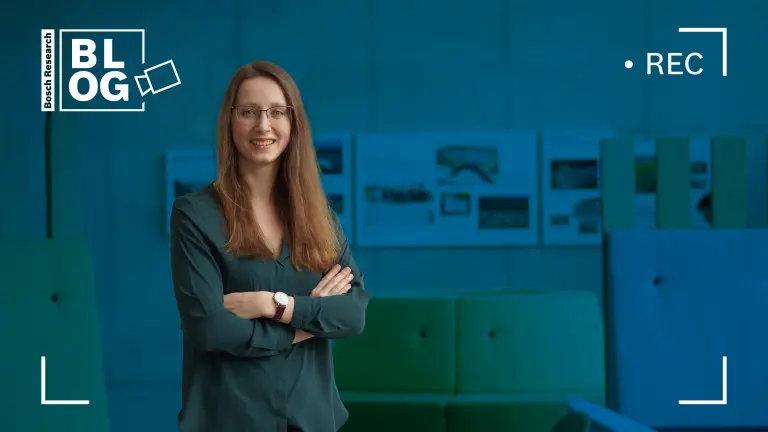
Loading the video requires your consent. If you agree by clicking on the Play icon, the video will load and data will be transmitted to Google as well as information will be accessed and stored by Google on your device. Google may be able to link these data or information with existing data.
To ensure the project's success, experts from renowned universities and world-leading companies in the fields of manufacturing technology, laser systems, process development and control, modeling, and powder production are working closely together in a multinational collaboration. The ultimate goal is to bring LPBF to the mass market of power electronics, with significant technological, economic and environmental benefits.
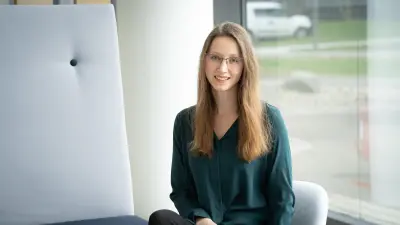
Author: Isabelle Günther
In November 2022, Isabelle Günther started her PhD at Bosch Research in Renningen, Germany, under the auspices of the University of Kassel. The focus of her thesis is the experimental and numerical development of an innovative hybrid additive manufacturing process for power electronics. This involves understanding the interactions and influencing factors in the laser-based manufacturing of functional structures on sensitive ceramic-based substrates. Isabelle Günther studied mechanical engineering at the University of Stuttgart, where she specialized in materials science and control engineering. During her studies, Isabelle broadened her knowledge of innovative manufacturing techniques, such as laser material processing, as a research assistant and as an intern. She also gained broad experience in the modeling and digitalization of such manufacturing processes and simulating the reliability behavior of the manufactured components.
